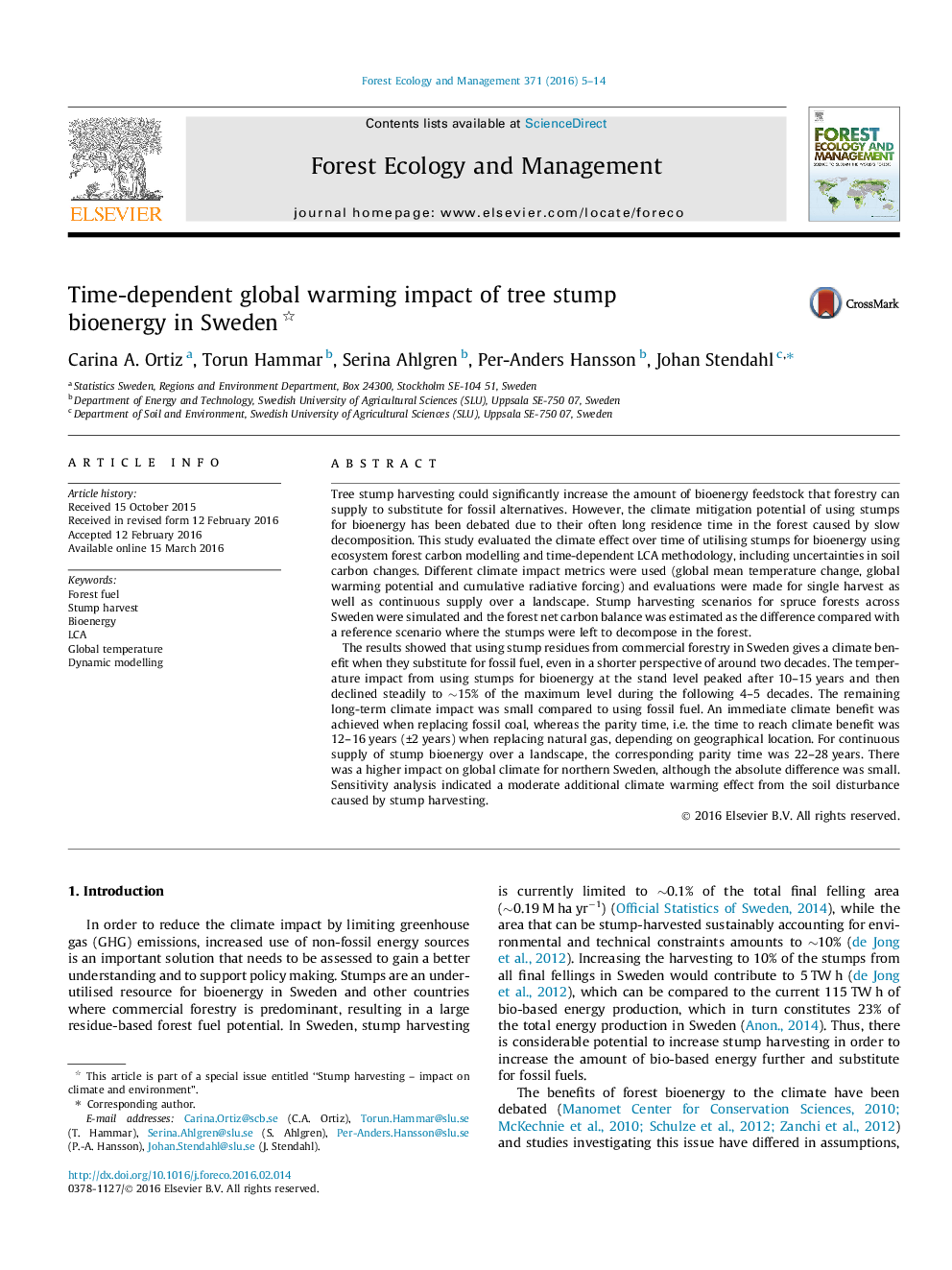| کد مقاله | کد نشریه | سال انتشار | مقاله انگلیسی | نسخه تمام متن |
|---|---|---|---|---|
| 85909 | 159149 | 2016 | 10 صفحه PDF | دانلود رایگان |
• Stump bioenergy was assessed using LCA and forest ecosystem modelling.
• Stump bioenergy gave a climate benefit within ca two decades when substituting fossil fuel.
• Regional differences in climate impact from stump bioenergy were small.
• Parameter uncertainties in soil carbon model was of minor importance for the conclusions.
• Soil disturbance by stump harvesting may cause a moderate climate impact.
Tree stump harvesting could significantly increase the amount of bioenergy feedstock that forestry can supply to substitute for fossil alternatives. However, the climate mitigation potential of using stumps for bioenergy has been debated due to their often long residence time in the forest caused by slow decomposition. This study evaluated the climate effect over time of utilising stumps for bioenergy using ecosystem forest carbon modelling and time-dependent LCA methodology, including uncertainties in soil carbon changes. Different climate impact metrics were used (global mean temperature change, global warming potential and cumulative radiative forcing) and evaluations were made for single harvest as well as continuous supply over a landscape. Stump harvesting scenarios for spruce forests across Sweden were simulated and the forest net carbon balance was estimated as the difference compared with a reference scenario where the stumps were left to decompose in the forest.The results showed that using stump residues from commercial forestry in Sweden gives a climate benefit when they substitute for fossil fuel, even in a shorter perspective of around two decades. The temperature impact from using stumps for bioenergy at the stand level peaked after 10–15 years and then declined steadily to ∼15% of the maximum level during the following 4–5 decades. The remaining long-term climate impact was small compared to using fossil fuel. An immediate climate benefit was achieved when replacing fossil coal, whereas the parity time, i.e. the time to reach climate benefit was 12–16 years (±2 years) when replacing natural gas, depending on geographical location. For continuous supply of stump bioenergy over a landscape, the corresponding parity time was 22–28 years. There was a higher impact on global climate for northern Sweden, although the absolute difference was small. Sensitivity analysis indicated a moderate additional climate warming effect from the soil disturbance caused by stump harvesting.
Journal: Forest Ecology and Management - Volume 371, 1 July 2016, Pages 5–14
